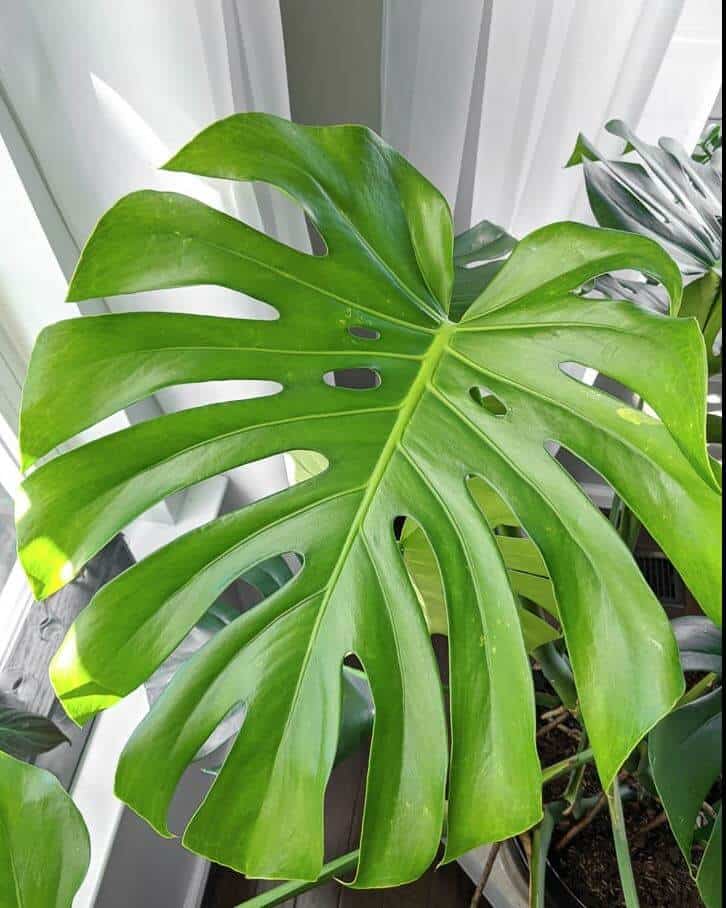Last Updated on September 9, 2023 by a Friendly Gardener
Houseplants, regardless of the species, are susceptible to pests and the popular Monstera plant varieties are no exception. Among common pests that afflict indoor gardens such as scale, mealybugs, spider mites, aphids, and fungus gnats, thrips are equally as bothersome and somewhat difficult to identify because they are so tiny, making them difficult to identify with the naked eye.
You will need a magnifying glass to see any thrips present on your Monstera. If you suspect thrips, set down the light-colored paper and shake your Monstera plant. Pests will fall on the paper making them easier to see and identify.
The Thrip
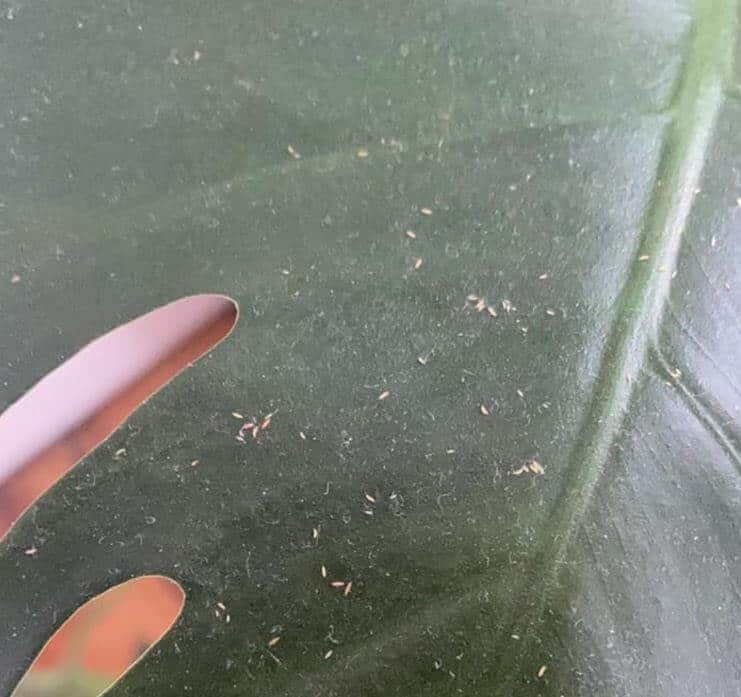
Although winged insects appear as brown, yellow, or white dots that will move around on Monstera foliage, they aren’t limited to leaf tops, they will move to the undersides and stems of your plant as well.
Larger exemplars may measure between 1.5 and 3 mm and unfortunately, numerous thrips species afflict the plant world. Monsteras generally are infested by black and yellow thrips that will feed on the plant’s sap depleting the Monstera.
Female thrips on Monstera will also reproduce on foliage by creating small holes in foliage tissue to deposit eggs. Several days after the eggs are deposited, they will hatch, and baby thrips will also feed on the Monstera’s sap. Female thrips can deposit eggs a dozen or more times during their life cycle will average 45 days.
How to Recognize Thrip Damage on Monstera Plants
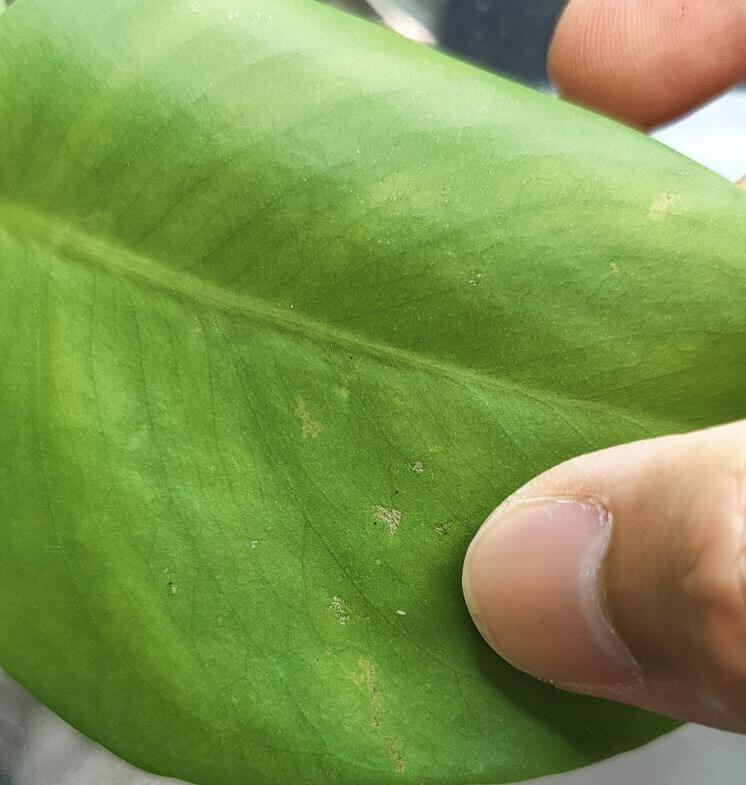
Although yellow or brown spots on leaves can be the result of a variety of problems, concentrated spots on the edges or middle of foliage may indicate a pest infestation, especially if your plant care is correct. Black spots on foliage can indicate thrip burrowing.
Other indications include foliage that droops, wilts, or curls. As the sap is sucked from the foliage, leaves will not retain their rigidity or shape. If you notice this reaction from leaves together with discoloration, thrips may be to blame.
Once that thrips attack foliage, it will not recover, so it’s advisable to remove damaged leaves and stems.
How to Get Rid of Thrips on Monstera Plants
Even if you are able to remove these pests from your Monstera plant’s foliage, there is still a risk that the pests will not be eliminated. If eggs have been deposited in the foliage soft tissue and hatch you will still have a thrip infestation. You will need to eliminate adult thrips as well as prevent any deposited eggs from hatching. You will probably need to treat your plant several times to fully eliminate a thrip infestation.
How to Treat Thrips on Monstera Plants
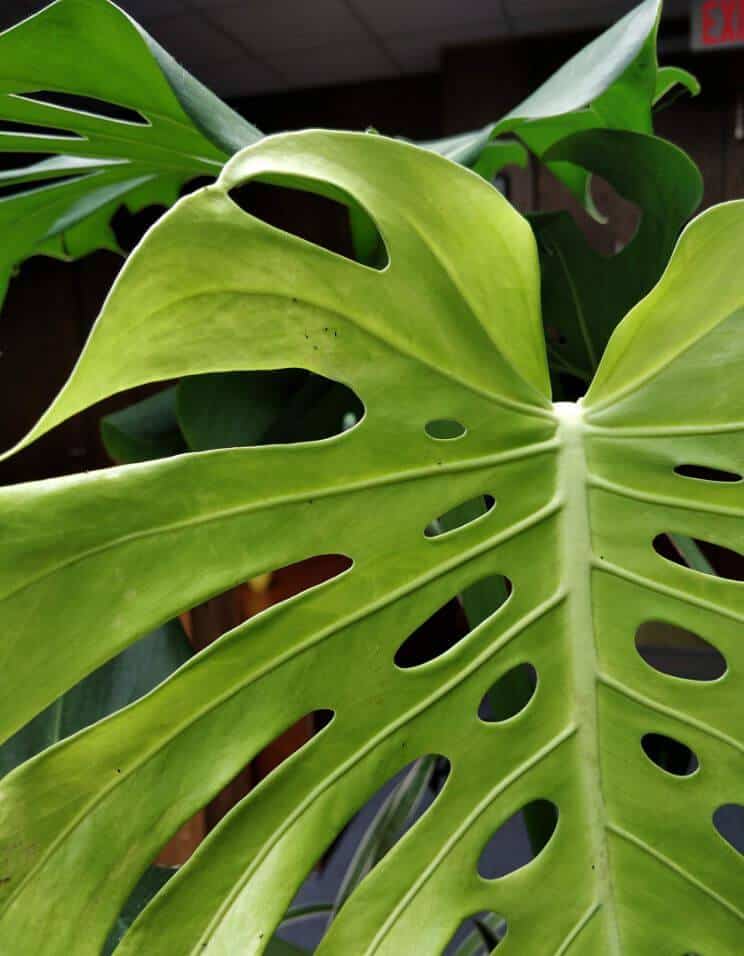
You can use a commercial chemical insecticide to eliminate these infestations. Just make sure to follow the instructions and correctly dilute the product. If you use a chemical insecticide, apply a small amount on a single smaller leaf to verify if your plant has an adverse reaction. Wait 24 hours before treating your entire plant. When treating a plant, you will need to spray leaf tops, undersides, and stems. Never soak your plant in insecticide. Repeat treatment weekly as necessary until there are no longer signs of a thrip infestation.
Natural Methods of Thrip Elimination
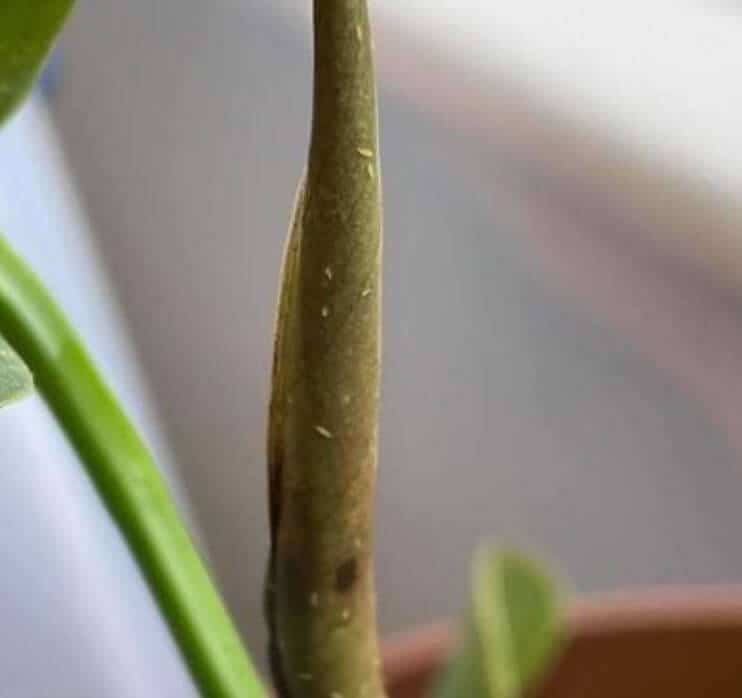
If you prefer not to use chemicals, there are a few ways to eliminate thrips naturally. You can use either commercial insecticidal soap or make your own. For homemade insecticidal soap, mix 1.5 teaspoons of liquid soap with a quart of water and spray immediately on your plant. Again, test it on a leaf before you use it on the whole plant. Perform this process in the early morning or early evening as insecticidal soap is effective while wet. You do not want it to dry out too quickly. Repeat this treatment weekly as necessary.
Neem oil is a favorite solution among plant enthusiasts. It is used to treat various pest infestations. Neem oil can be found in a ready-to-use spray or in a pure oil form that requires dilution. For pure neem oil, follow dilution instructions. Spray your plant and let the oil application dry. Neem oil can also be used as a preventative treatment.
It’s advisable to apply Neem oil outdoors due to its characteristic smell. Once it dries, the smell disappears. Again, use it in the early morning or evening.
If you prefer to avoid treating your plant altogether, sticky traps are a viable alternative. White, yellow, and blue, traps are suggested as these colors appear to attract thrips.
You might try spreading honey from your pantry on papers of these colors and position them in the vicinity of your Monstera plant. Or you can attempt to remove them from Monstera foliage with a sticky lint roller. Use the roller gently on both sides of the foliage and the stems.
Mother Nature’s Solution for Thrip Elimination
Mother Nature has a secret weapon for controlling Thrips: Ladybugs! You can order Ladybugs and place them in your Monstera’s soil bed. They will locate your thrips as soon as they are hungry. They will also migrate to any other houseplants you have which is fine as they do not present a threat.
Remove Damaged Foliage
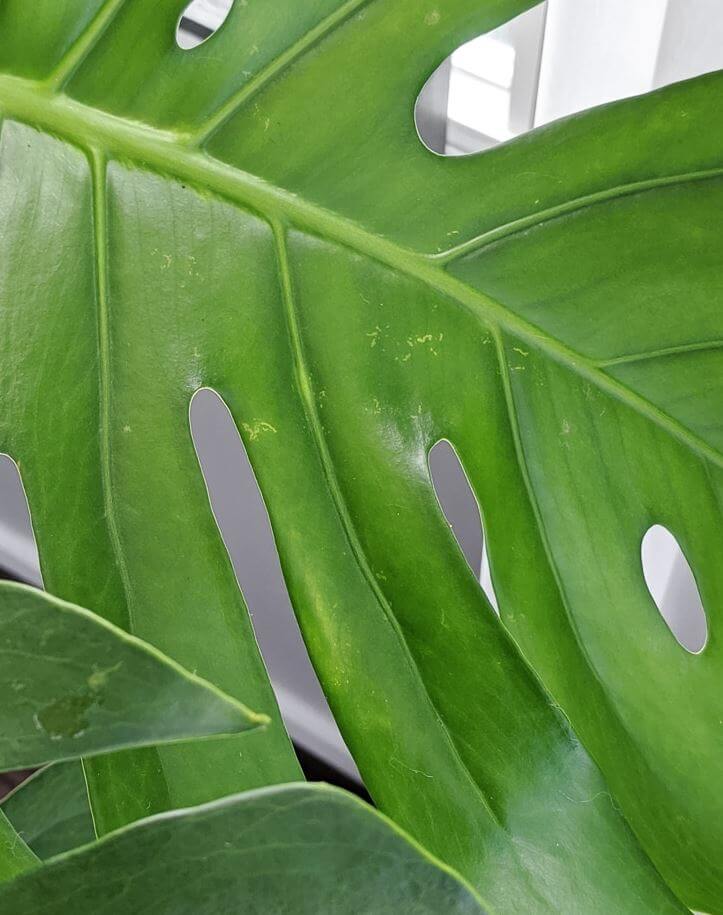
If your Monstera plant is heavily infested, it may be wise to trim off infested and damaged leaves. Damaged leaves may be harboring unhatched eggs, so this will prevent a new generation of thrips from attacking your plant. Removing damaged leaves will also help your plant to channel energy to healthy foliage and new growth.
The Bottom Line
Thrips can be particularly difficult to eradicate because females are continually depositing eggs which then hatch providing a new generation. This is the primary reason for treating your plant several times. If you have purchased or received a new Monstera plant, quarantine it for a couple of weeks in case it is infested to prevent thrips from spreading to other indoor plants. Remember to examine your plant often for health issues and evidence of pest infestations.

